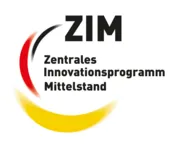IMoFlecht – Inline Monitoring System for Automated Inspection of High-Quality Braided Products
In order to automate the quality inspection of high-quality braids, an inline system consisting of a self-learning optical inspection and a sensory bobbin carrier monitoring will be developed.
Project Partners
Barthels-Feldhoff GmbH & Co. KG, ark Industrie AG
Duration
01.04.2020 – 31.03.2022
Funding authority
Federal Ministry of Economic Affairs and Energy
Motivation
Braiding is a highly automated process for the production of technical textiles or the manufacture of predominantly tubular preforms directly from carbon fibre yarns. Currently, a manual haptic and visual inspection is carried out for high-quality or safety-critical braided products. This inspection is however laborious and comes with the risks of human inattention as well as deviating subjective inspection results. Moreover, in case of a persisting braiding defect, large quantities of defective braid are produced until the product reaches the manual offline inspection. By means of the desired inspection system for inline monitoring of the braiding process, the manual effort for inspection can be reduced, the quality assurance can be objectified and error costs can be decreased.
Method
In the beginning, detection thresholds for typical braiding defects are defined by optical defect measurement and characterisation of the effects of defects. In order to provide enough training data for the image detection algorithm, synthetical images of defects are generated by means of rendering software. Newly developed, sensor integrated bobbin carriers will be implemented into an experimental braiding machine. The bobbin carriers are wirelessly provided with energy and send relevant process data to a control unit. Each time, the camera detects a braiding defect, the data sequence gathered directly before by the sensor integrated bobbin carriers is analysed. By means of a self-learning control loop, the system continuously improves itself as the machine is running. The goal is that a defect is not only optically detected when it has already manifested in the braided product, but earlier when anomalous process data hints at the presence of a defect. An early defect detection is beneficial because - together with a halt of the machine - it enables a removal of the error cause and thus the avoidance of material waste.
Acknowledgement
The chair thankfully acknowledges the funding provided by the German Federal Ministry of Economic Affairs and Energy through the AiF Projekt GmbH under the scheme “Zentrales Innovationsprogramm Mittelstand (ZIM)” on an inline monitoring system for automated inspection of high-quality braided products (“Inline Monitoringsystem zur automatisierten Prüfung hochqualitativer Flechtprodukte – IMoFlecht“, funding code: ZF4004324HB9).


Contact Persons
Dr.-Ing. Swen Zaremba
